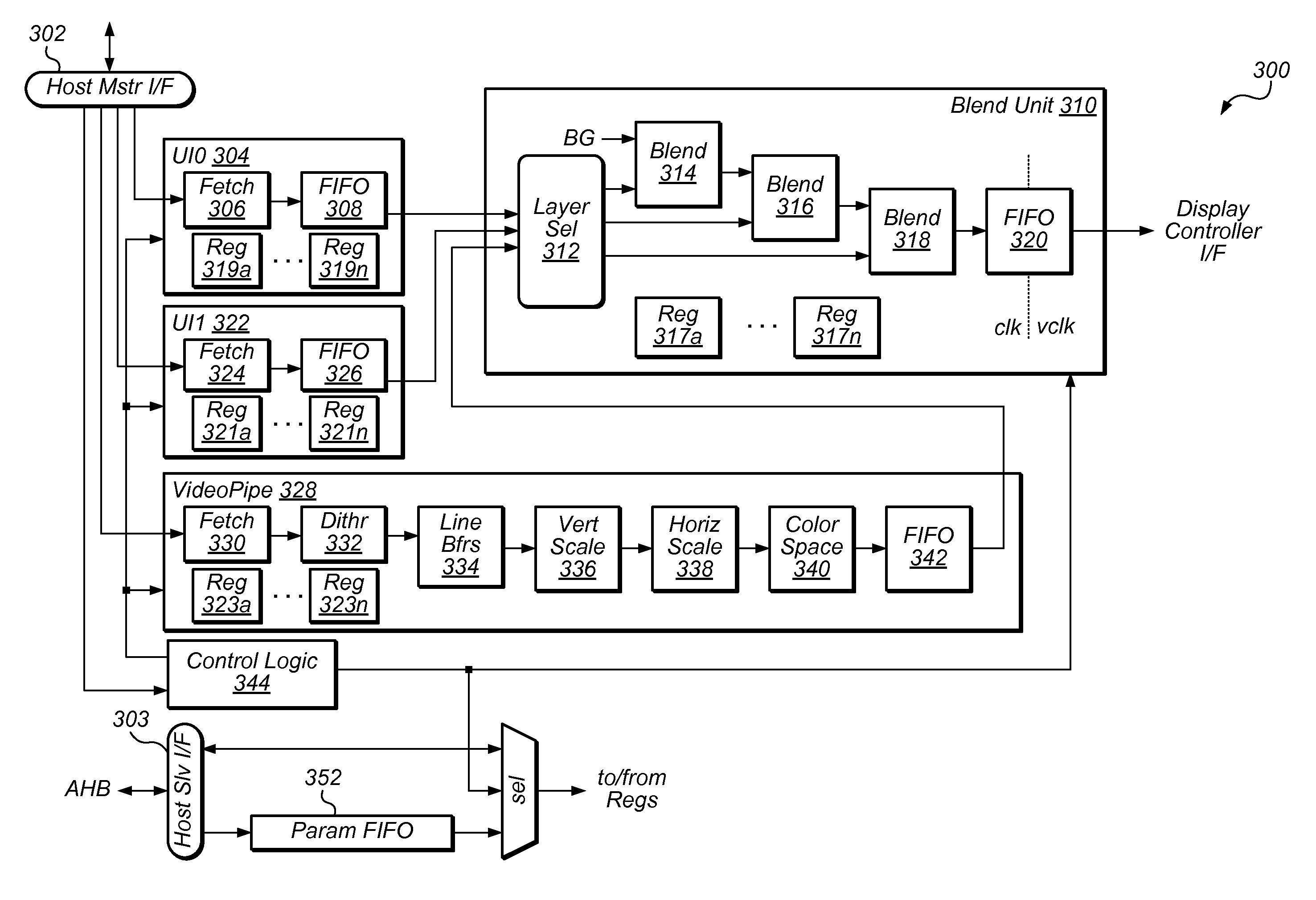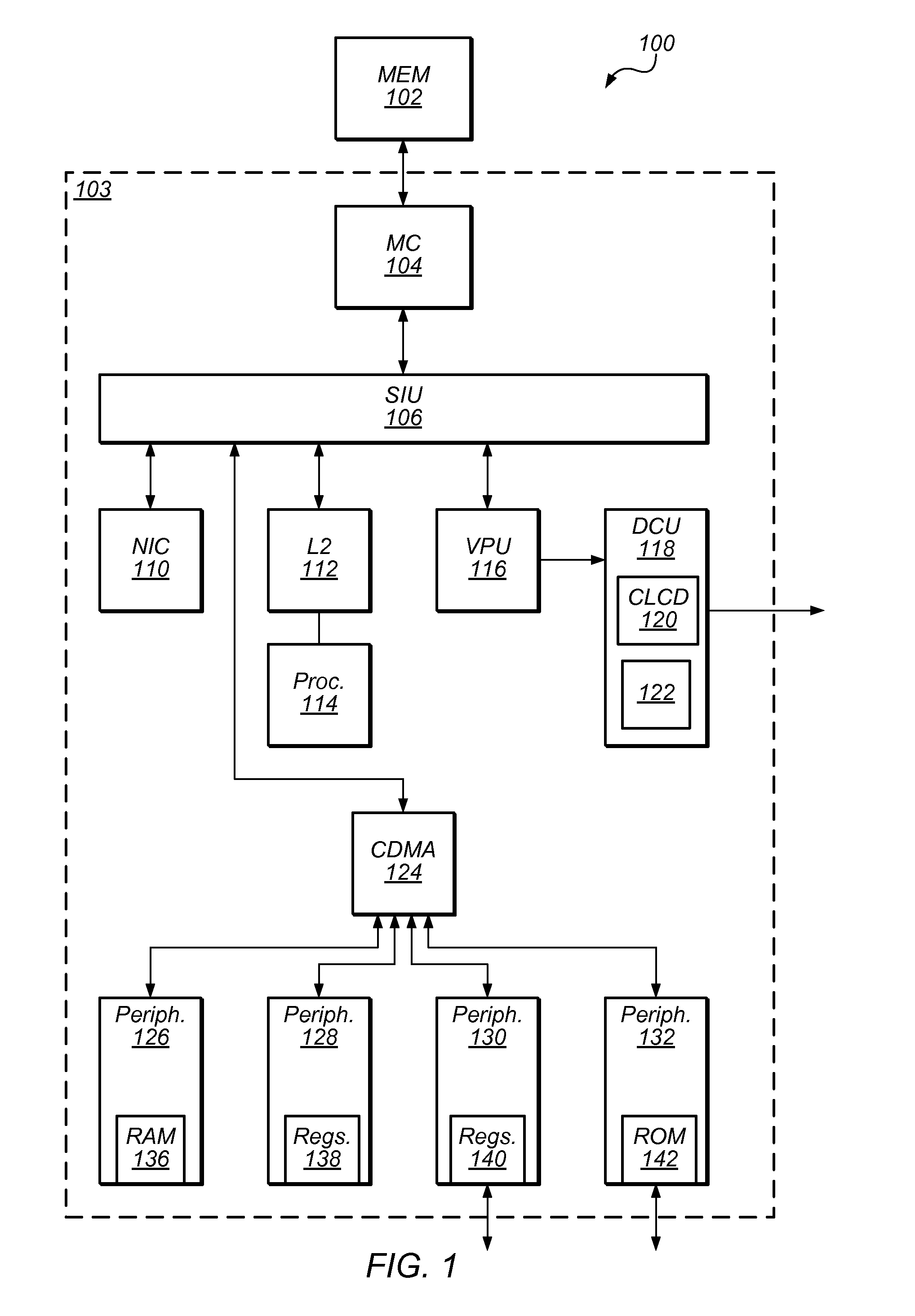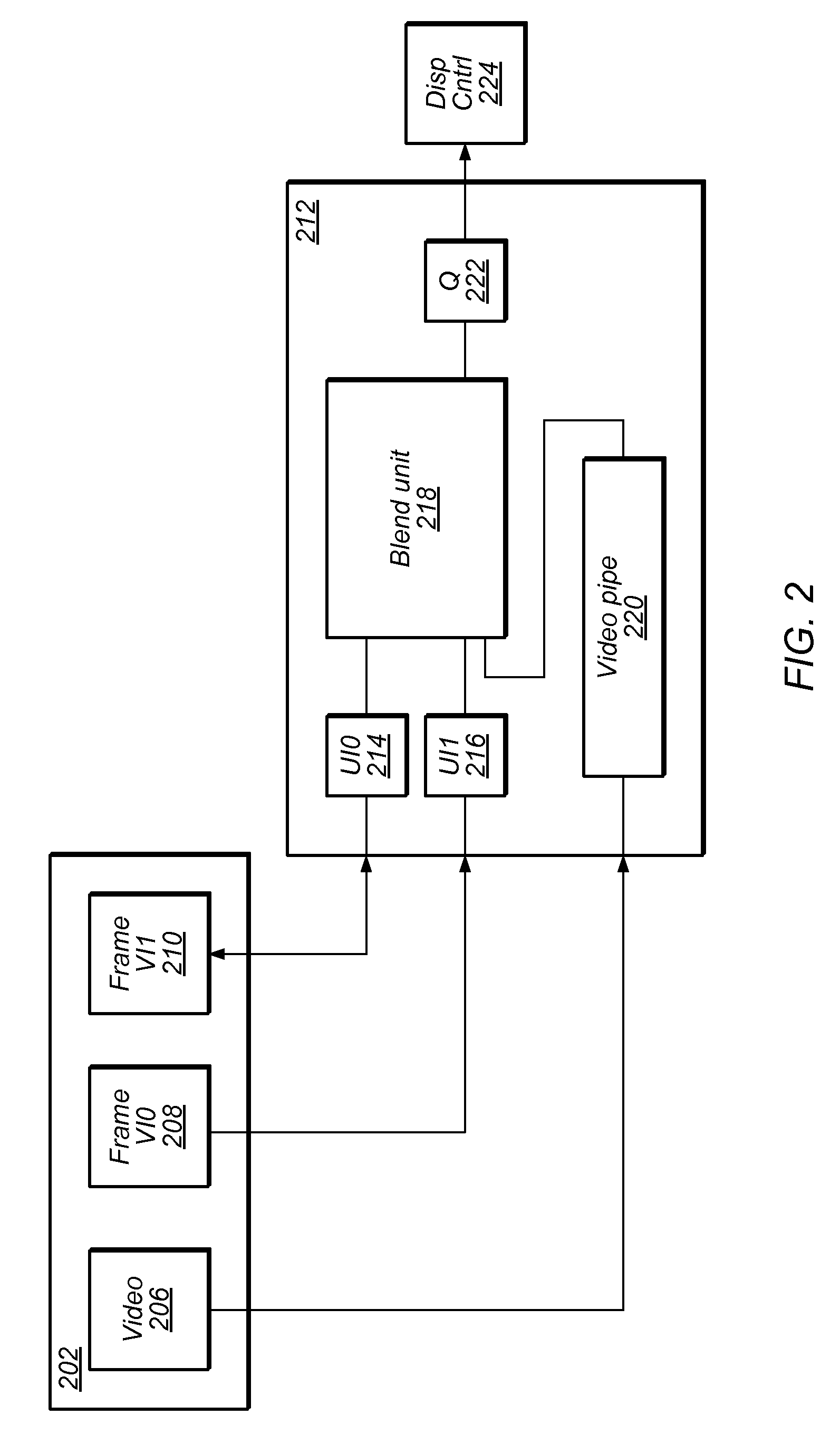Parameter FIFO
a technology of parameter fifo and register, which is applied in the field of reading and writing registers, can solve the problems of premature battery depletion of battery-operated devices and high system requirements, and achieve the effect of reducing the amount of processor activity required
- Summary
- Abstract
- Description
- Claims
- Application Information
AI Technical Summary
Benefits of technology
Problems solved by technology
Method used
Image
Examples
embodiment 700
[0048]Turning now to FIG. 4, one possible embodiment 700 of the structure of parameter FIFO 352 is shown, illustrating how frame packets and parameter commands may reside in parameter FIFO 352. As seen in the embodiment of FIG. 4, details are shown for the exemplary structure of a frame packet 702 detailing the structure of frame packet 702, which may be situated next to frame packet 706, which may itself be situated next to frame packet 704, etc. Additional frame packets may of course be situated in parameter FIFO 352 above frame packet 704 and below frame packet 702. In one set of embodiments, each parameter packet may contain a frame header 720 followed by zero or more parameter commands (722 to 724, with additional parameter commands that may be situated in between parameter commands 722 and 724 not shown), which may issue the configuration parameter writes.
embodiment 400
[0049]FIG. 5 shows the configuration of one possible embodiment 400 of frame header 720 (the contents of which are also partially illustrated in FIG. 4). Frame header 400 may be designated as the first specified number of bits within a frame packet, e.g. the first 32-bit word of a frame packet, and may contain synchronization information determining whether or not parameter commands subsequent to the frame header in the frame packet are to be issued. As shown in FIG. 4, frame header 400 is a 32-bit word. The most significant bit (MSB—in this case bit 31) may be a header flag indicating that this word is a frame header as opposed to a parameter command. The next bit (in this case bit 30) may contain a Sync bit used to synchronize the frame count to the frame pointer, which may be of specified size (more specifically a specified number of bits), e.g. a 16-bit frame pointer implemented in the embodiment as the 16 least significant bits (LSB—in this case bits 15:0). The frame pointer ma...
PUM
 Login to View More
Login to View More Abstract
Description
Claims
Application Information
 Login to View More
Login to View More - R&D
- Intellectual Property
- Life Sciences
- Materials
- Tech Scout
- Unparalleled Data Quality
- Higher Quality Content
- 60% Fewer Hallucinations
Browse by: Latest US Patents, China's latest patents, Technical Efficacy Thesaurus, Application Domain, Technology Topic, Popular Technical Reports.
© 2025 PatSnap. All rights reserved.Legal|Privacy policy|Modern Slavery Act Transparency Statement|Sitemap|About US| Contact US: help@patsnap.com



